CIPD Voice On... the latest working from home trends, by James Cockett, the CIPD's labour market economist.
As the dust settles on the pandemic, working lives for many have been transformed. The biggest change for many is the increased prevalence (and normality) of home working. Pre-pandemic fewer than 1 in 20 employees in the UK considered their own home to be their main place of work. Now it is more than 1 in 5!
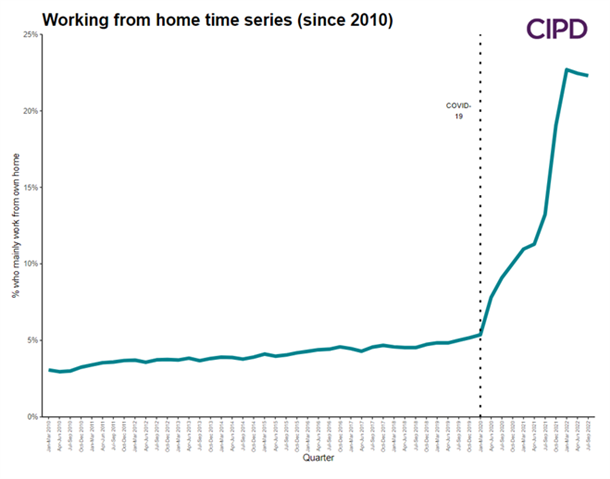
There has been an adjustment period in the data, with employees realising that with the new hybrid ways of working, they are spending more time at home than in the office. It is being widely accepted by employers as the norm with managers believing flexible working is improving productivity. For workers, it is improving their work-life balance (78% in Feb 2022 (ONS) and reducing commuting time and costs, although the latter is now being offset by rising energy bills. The data shows we are settling at a new level of around 22%. But where are the working from hotspots?
Click to zoom into graph.
Working from home hotspots (% mainly working from home)
- Woking (53.2%)
- Epsom and Ewell (47.3%)
- Mole Valley (40.8%)
- Brighton and Hove (40.5%)
- Islington (40.0%)
- Wokingham (39.5%)
- Lambeth (37.6%)
- Windsor and Maidenhead (37.1%)
- Camden (37.1%)
- Mid Sussex (37.1%)
Explore the data here.
England
The 10 hotspots are all in London and the South-East where there is a particularly high concentration of home working. Many of these areas follow the main train lines and arterial roads into the city, meaning access to London is often available to those who want it. A key driver is that those who previously worked the majority of their time in London are now working from home more and commuting less. Those previously living in London have not been upping sticks to live in these commuter towns.
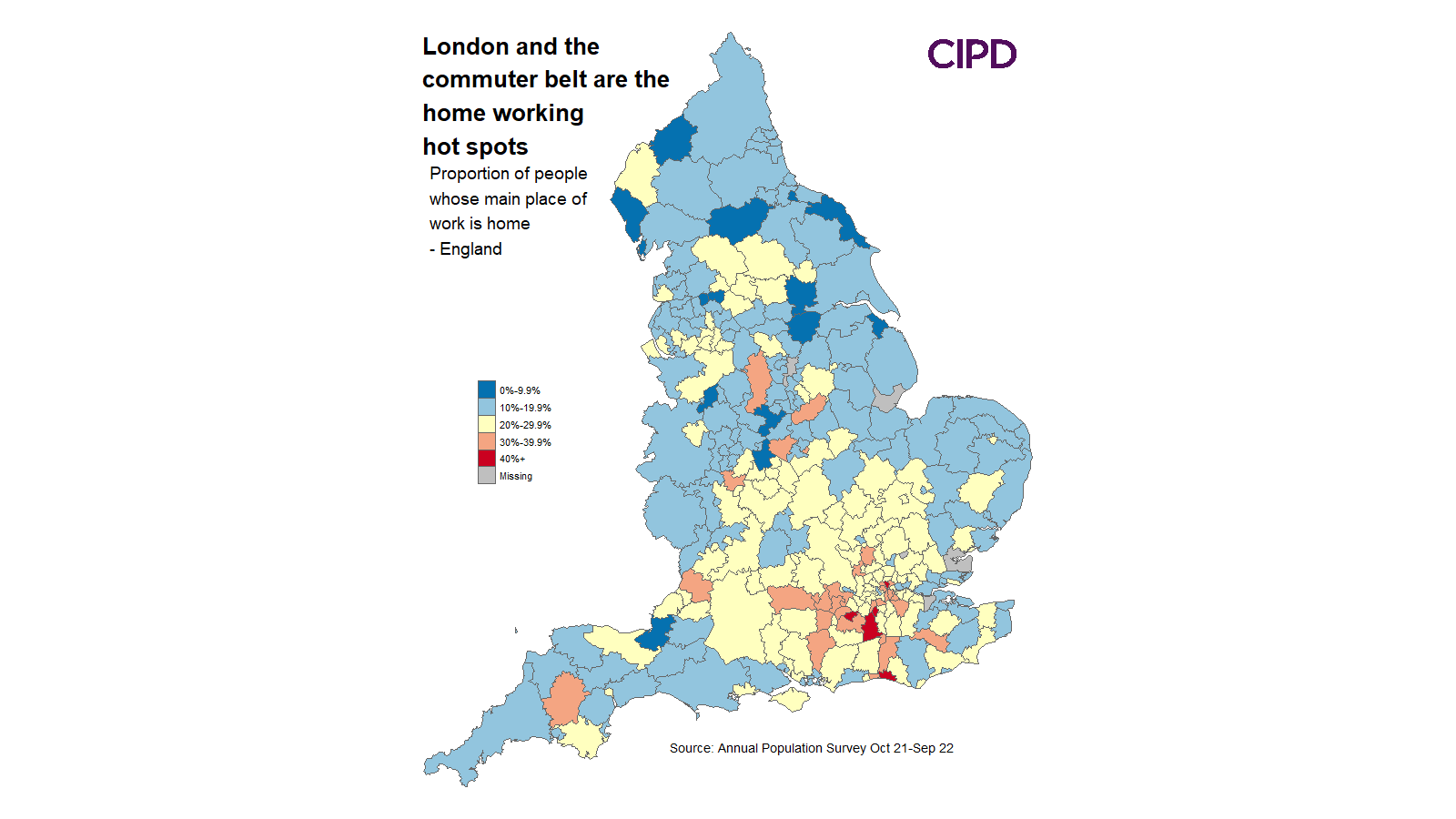
Surrey is the county with the top three working-from-home destinations. Woking stands out as the clear destination with over half of residents (53.2%) mainly working from home. It has a commuting time to central London of 29 minutes and was ranked in the top 10 commuter towns, according to The Telegraph. Another location that features in this article and the working from home top 10 is Maidenhead (and Windsor) which now has improved commuting times due to the building of the Elizabeth Line. This prime Berkshire location alongside Wokingham also made the top 10. The Sussex locations of Brighton and Hove, dubbed London by the sea by many, and Mid Sussex which includes the commuter towns of Haywards Heath and Burgess Hill also are included in the list.
London
By region, London has the highest rates of home working at 30% with Islington coming in top spot. This will no doubt please its residents who are often scapegoated by politicians such as previous PM Liz Truss as those who “take taxis from north London townhouses to the BBC studios". Camden which is notoriously sought after by young Londoners, and Lambeth, also make the top 10. Not needing to be in the office, however, is weakening demand in the London housing market with prices falling in Westminster (-4.2%)[1] and the City of London (-1.1%), and house price growth negligible (compared to other areas) in Camden (+0.4%), Tower Hamlets and Kensington and Chelsea (both +1.3%). Until the interest rate rises of the last few months, house prices on average had risen significantly across the country since the start of the pandemic.
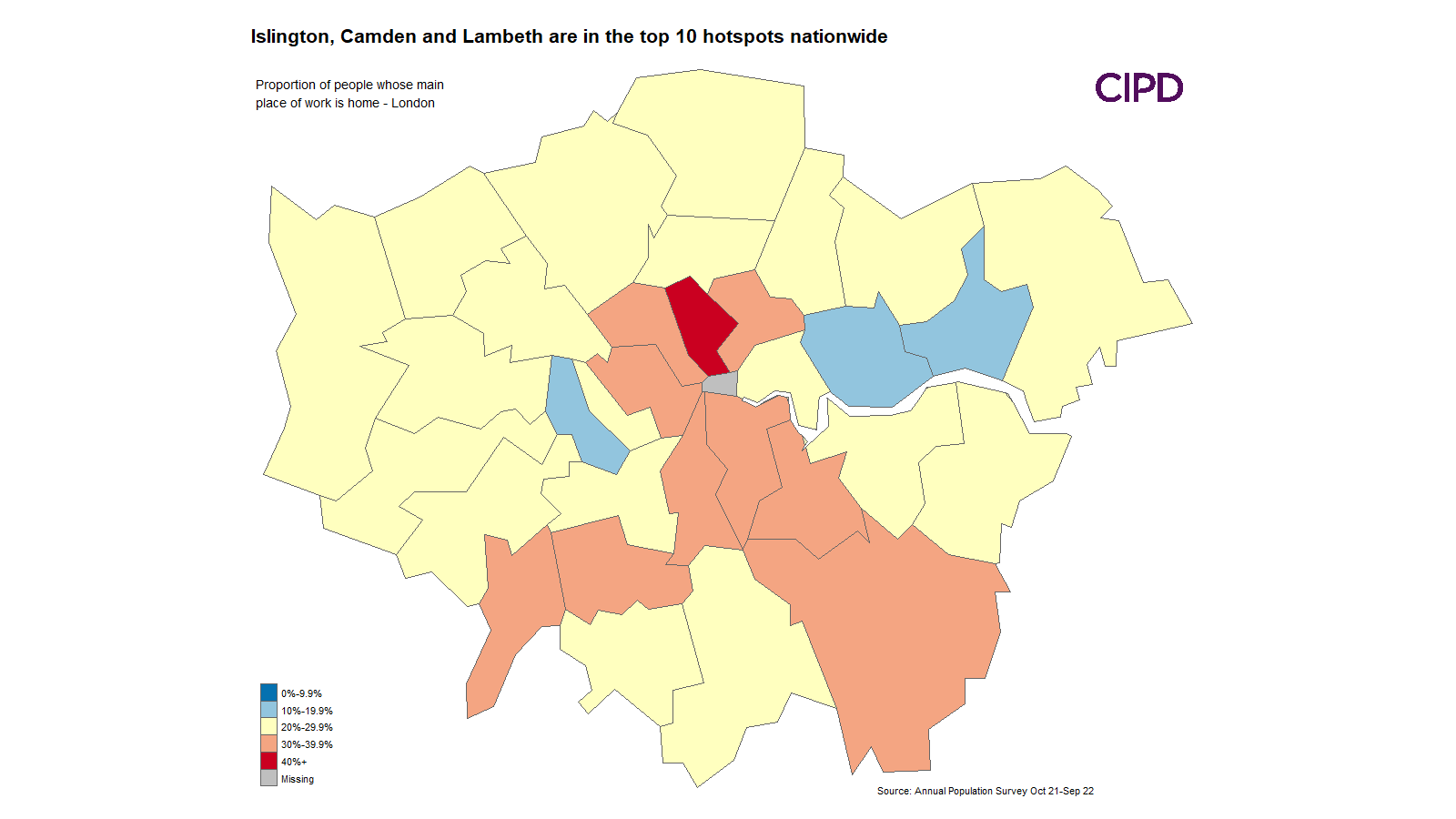
Scotland
Turning to Scotland, the level working from home in Edinburgh is 35%, reflecting the higher level of professional workers in the Scottish capital. Other Scottish cities, Glasgow (24%) and Dundee (23%) are not too dissimilar from the UK average (22%). Aberdeen is lower at 18%. Interestingly Scotland only has one local authority with less than 10% mainly working from home, the Orkney Islands. Even the Shetland Islands which sit above (but not presented) has a rate of 14%. Bordering Carlisle has one of the lowest rates in the UK at 6%.
Wales and Northern Ireland
The Welsh capital, Cardiff, sees the highest proportion of home working at 30%. Monmouthshire, on the border with England, and Glamorgan have the next highest rates in Wales (27.1%). Swansea (24.6%) and Newport (22.1%) have rates closer to the UK national average. Merthyr Tydfil is the only LA with fewer than 1 in 10 (9.5%) mainly working from home in Wales. In Northern Ireland 13% of the population mainly work from home[2].
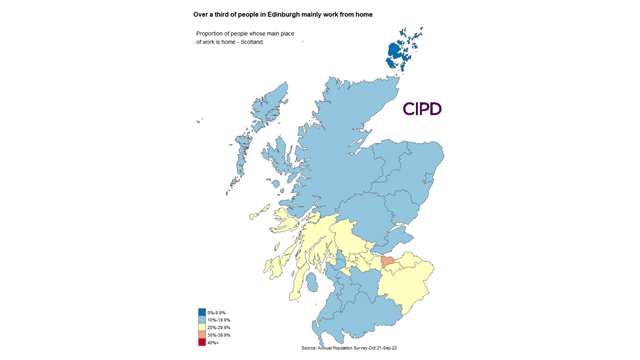
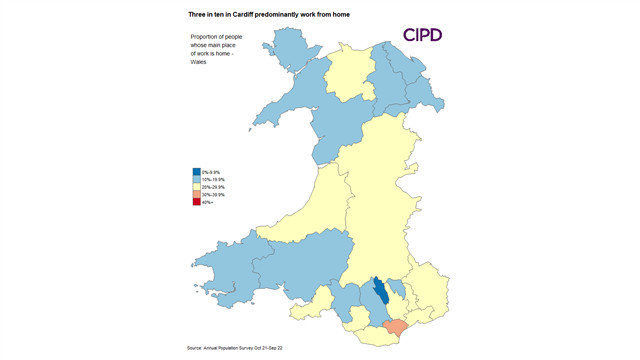
Click to zoom into maps.
Who is working from home?

There were huge surges in many of the occupational groups from March 2022. The increases were most prevalent in four groups (Managers and Senior officials, Professionals, Associate professionals and Administrative occupations) a.k.a the “Office jobs”. Now more than a third of employees in jobs in each of these categories mainly work from home. Professionals (the largest in terms of numbers) continued to rise in the first half of 2022, falling to 34.6% in the latest quarter. Seemingly there is a small degree of return to office for some professionals.
Click to zoom into graph.
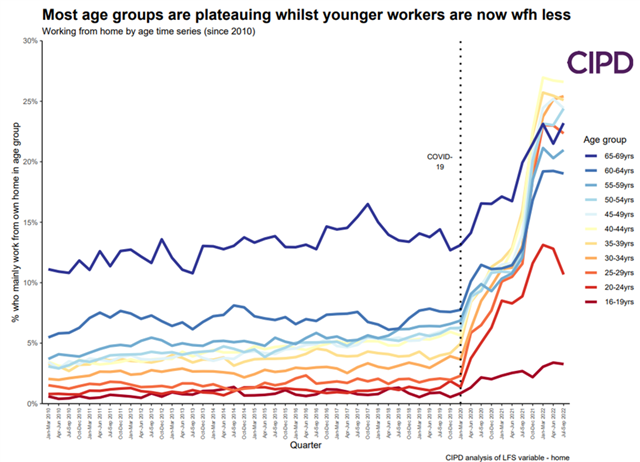
Looking forward, any time a company now announces a mandated return to the office it will make the headlines, as it has done with Disney, Getir and Apple in recent months. Self-perceived productivity is higher when working from home and there is growing evidence that it raises job satisfaction. The government have acknowledged the benefits of flexible working as evidenced by the recent planned legislation to be able to request the right to flexible working from day one. I plan to keep my eye on working from home trends by age and occupation, and commuting patterns and house prices over the next few months, so watch this space.
Click to zoom into graph.
Further reading
[1] Analysis of Average House prices from UK House Price Index between March 2020 and October 2022 https://www.gov.uk/government/statistics/uk-house-price-index-for-october-2022
[2] Figures are not presented at Local Authority level due to small sample sizes.
